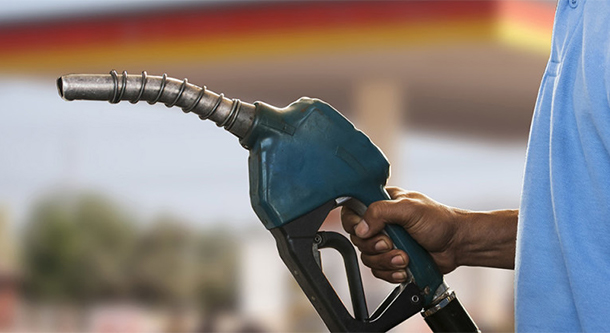
Over the long holiday weekend, the national gas price average has held steady for five days at $2.97, signaling that prices may be stabilizing as we head into June. This development comes as crude oil prices start to fall following some of the highest prices in three-years.
“At the start of the holiday weekend, reports indicated that OPEC may raise production levels to help ease global supply concerns. The announcement immediately brought down the price of crude – which has dropped nearly $3/bbl since Thursday,” said Jeanette Casselano, AAA spokesperson. “This is welcome news to motorists who have not only seen pump prices increase, on average, 16-cents since the beginning of May, but are paying the highest prices to fill up since 2014.”
Gas prices, however, remain very expensive. On the week, three states have been added to the list of states with a gas price average of $3 or more – making for 17 states in total. Another four states are just pennies away from joining this list, including Indiana, Maryland, New Mexico and Massachusetts.
Quick Stats
- The nation’s top 10 largest monthly increases are: Wisconsin (+27 cents), Colorado (+26 cents), Minnesota (+25 cents), North Dakota (+24 cents), Illinois (+23 cents), Wyoming (+23 cents), Michigan (+23 cents), Montana (+22 cents), New Mexico (+21 cents) and Connecticut (+20 cents).
- The nation’s top 10 most expensive markets are: California ($3.74), Hawaii ($3.71), Washington ($3.46), Alaska ($3.40), Oregon ($3.35), Nevada ($3.33), Idaho ($3.18), Connecticut ($3.15), Utah ($3.15) and Pennsylvania ($3.12).
West Coast
Pump prices in the West Coast region are the highest in the nation: California ($3.74), Hawaii ($3.71), Washington ($3.46), Alaska ($3.40), Oregon (3.35), Nevada ($3.33) and Arizona ($3.05). On the week, all gas prices in the region are up, with Arizona (+5 cents) seeing the largest increase. Washington, Alaska and Oregon were close behind as each state saw their average increase by four cents.
According to the Energy Information Administration’s (EIA) report for the week ending on May 18, inventories of gasoline climbed by 500,000 bbl to 30.2 million bbl. When compared to a year ago, levels are up over 1 million bbl.
Great Lakes and Central
With a 10-cent increase, Michigan has the largest week-over-week increase in the country followed by Illinois (+7 cents). Also seeing large jumps in the region on the week with five-cent increases are: Wisconsin, Nebraska and North Dakota. All other states saw prices increase one to four cents since last Tuesday.
Indiana ($2.98) is just two-cents away from hitting the $3 threshold and joining Illinois ($3.11) and Michigan ($3.09).
Plunging 1.7 million bbl, gasoline inventories in the Great Lakes and Central states sit at their lowest levels of the year (52.6 million bbl). According to EIA data, this past January was the last time the region saw inventories under 53 million bbl.
South and Southeast
After a week of steady gas prices, Floridians ($2.91) are paying, on average, six-cents more a gallon to fill up. That is the third biggest weekly increase in the country on the week. With a nickel jump, Georgia has the fourth biggest increase of all states.
Comparing gas price averages in the South and Southeast to a year ago, Louisiana has the smallest increase at 53-cents, while New Mexico (67-cents) touts the biggest year-over-year increase.
With a 770,000 bbl add, the South and Southeast’s gasoline inventories sit at nearly 79 million bbl, a healthy measure for May, which historically fluctuates between 76 – 82 million bbl this time of year.
Mid-Atlantic and Northeast
Gas prices are as much as a nickel more expensive on the week in the Mid-Atlantic and Northeast region with Rhode Island and Tennessee seeing this price jump. West Virginia saw the smallest increase at two-cents.
Year-over-year, Connecticut (+64 cents) and Rhode Island (+63 cents) are seeing the largest increases in the region. Both of these states have gas price averages of $3 or more, $3.15 and $3.02, respectively, along with Pennsylvania ($3.12), Washington, D.C. ($3.10), New York ($3.10) and New Jersey ($3.02).
Inventories increased by a substantial 2 million bbl on the week – the largest add of any region according to the EIA. At 65.2 million bbl in total, inventories are among the healthiest levels of the year, yet a nearly 5 million bbl deficit compared to late May 2017.
Rockies
With a nickel increase, Wyoming, Colorado and Montana are among the top 11 states in the country with the biggest pump price jumps on the week. As the region enters heavy tourism season, motorists in these states, as well as Utah and Idaho, can expect prices to continue to increase. Currently gas prices across the region are: Idaho ($3.18), Utah ($3.15), Montana ($2.92), Colorado ($2.91) and Wyoming ($2.89).
The latest EIA report shows a nearly 250,000 bbl build on the week. At 6.9 million bbl in total, inventories sit more than a half a million barrels below levels at this time last year.
Oil market dynamics
At the close of Friday’s formal trading session on the NYMEX, WTI fell $2.83 cents to settle at $67.88. Oil prices fell following reports that OPEC may increase output by about 1 million b/d ahead of schedule in order to ease continued crude price growth as economic turmoil in Venezuela and renewed U.S. imposed sanctions on Iran could further reduce global supply. Energy ministers from Russia, Saudi Arabia and the United Arab Emirates met in St. Petersburg, Russia, last week to review the status of their global oil supply reduction agreement, which has helped to decrease global oil supplies and raise prices since the beginning of 2017. The pact is scheduled to dissolve at the end of 2018. If OPEC and its partners announce a supply increase, it will likely occur at the next OPEC meeting on June 22 in Vienna, Austria.
Oil prices also declined after EIA’s weekly report showed that total crude inventories grew by 5.7 million bbl. A decrease in crude exports, an increase in imports and record-breaking crude production contributed to the inventory growth. The news was a surprise to the market, which expected to see inventories decline in the run-up to Memorial Day weekend. If the trend continues in the weeks to come, crude prices may continue to edge lower. At 438.1 million bbl, stocks are 78.2 million bbl lower than they were at this time last year.
Additionally, Baker Hughes, Inc. reported that the U.S. added 15 oil rigs last week, bringing the total to 859. The total is up by 137 rigs when compared to last year at this time.
Motorists can find current gas prices along their route with the free AAA Mobile app for iPhone, iPad and Android. The app can also be used to map a route, find discounts, book a hotel and access AAA roadside assistance. Learn more at AAA.com/mobile.



